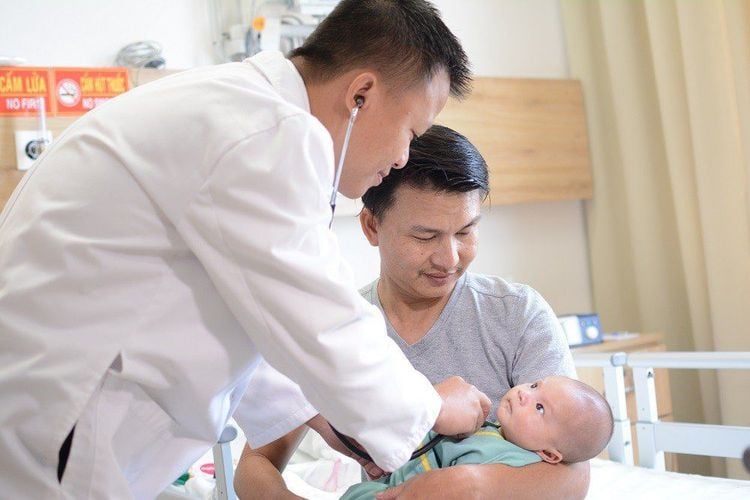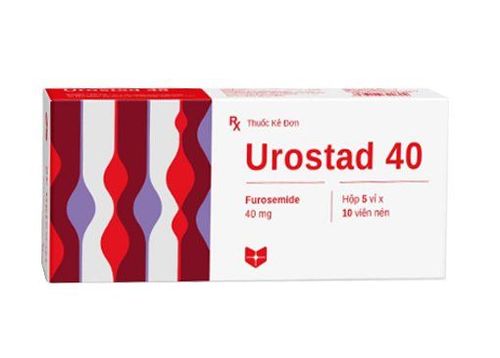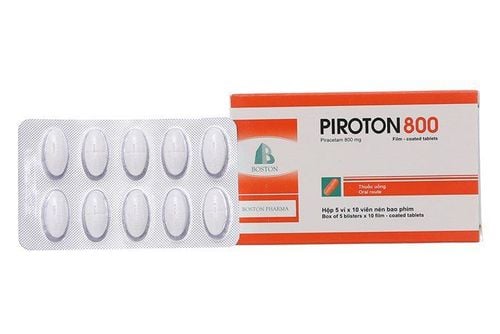This is an automatically translated article.
The article was consulted professionally by Assoc. Dr. Dr. Huynh Thoai Loan - Head of Pediatrics - Neonatology Department, Vinmec Central Park International General Hospital. Uncle is one of the leading experts in Pediatrics - Neonatology in Ho Chi Minh City with nearly 30 years of experience in examining and treating diseases of pediatric endocrinology, pediatric nephrology and other pediatric - neonatal problems.Intubation is a vital procedure in the field of emergency resuscitation. This is a frequently used method in anesthesia and surgery, especially in the case of small children that need to be more careful and meticulous.
1. Intubation in children
Endotracheal intubation is the procedure of inserting a catheter into a patient's trachea to ensure ventilation and drain sputum stagnation in the airways.
Intubation is a simple procedure, easy to practice, but extremely important. In the case of an emergency patient, the procedure should be performed quickly and promptly, to avoid complications due to the delay in opening the patient's airway.
2. Indications for endotracheal intubation in children
Intubation helps to maintain the airway, which provides a source of oxygen with a fairly high concentration. Intubation ensures the supply of artificial air volume is circulated with each breath, convenient to aspirate viscous sputum and secretions, prevent aspiration of gastric secretions, from the oropharynx, isolate pulmonary area, creating a resuscitative route during intravenous infusion or in the bone if healing is not possible. Early intubation should be done to avoid damage to oxygen-sensitive organs such as the brain and heart. Indications for endotracheal intubation for children are wider than for adults.
Indications for intubation include:
Cardiac arrest – apnea Severe circulatory failure Consciousness disorder Unresponsiveness to oxygen, NCPAP Accident: snake bite, asphyxia, poisoning 🡪 affecting breathing – weeks Complete coma patient Anesthesia for surgery
3. Possible complications and complications
3.1 Technical complications Bleeding: due to the endotracheal tube being too large, pushing the tube forcefully causes bleeding in the anterior nostril, posterior pharynx, vocal cords, trachea. Infection: due to poor sterility, tracheal wall abrasion. The endotracheal tube is inserted deep into the esophagus. 3.2 Complications Complications during intubation Misplacement of the endotracheal tube into the esophagus: The patient is not ventilated and oxygenated unless spontaneous breathing remains. If intubation is not recognized, the patient can suffer permanent brain damage or death. Trauma: Broken teeth; tearing the lining of the lips or tearing the tongue; laceration of the pharynx or trachea; deviation of the funnel cartilage; pneumothorax; 2 damaged larynx; perforated esophagus; aspiration of gastric secretions into the lower respiratory tract, low blood pressure, bradycardia; Intracranial pressure increases... Wrong placement of endotracheal tube: Placing the tube too deep into the bronchus causes unpredictable consequences, with a risk of death. Local complications Aspiration Vocal cord paralysis Granular tumor formation within the trachea or upper vocal cords Adhesive trachea Lower glottis narrowing Formation of the membrane of the larynx Smooth trachea Leakage of trachea to esophagus , trachea with artery, trachea with artery Complications after extubation Glandular stenosis Vocal cord lesions Hoarseness.

4. Conduct endotracheal intubation for children
4.1 Intubation through the nose (intubation) The method of intubation through the nose is often done because it is easy to place, does not need a laryngoscope. Children can eat and drink through the mouth.
Procedure:
Place the child in the correct position. Suction sputum and give the child oxygen. Perform anesthesia techniques. Apply paraffin oil to the endotracheal tube and give it to the doctor. When the doctor inserts the tube into the trachea, the nurse regularly monitors the patient's breathing rate and facial expression to prevent the patient from stopping breathing. When the tube is in the trachea, monitor the patient for cough reflex, strong exhalation of breath through the tube, increased sputum secretion or not. Suction sputum for the child Squeeze the breathing tube through the endotracheal tube so the doctor can check the ventilation of the lungs. Inflate the cuff. Fix the endotracheal tube. 4.2 Oral endotracheal intubation Oral endotracheal intubation is only performed when there are obstructions to the nasal passages such as: nasal polyps, nasal sphincter hypertrophy,... Lubrication, fixation of the position of the guide rod endotracheal tube. Let the child lie in the correct position, then keep the neck axis straight and keep it straight from the axis of the mouth to the larynx to the pharynx. Pinch the child's mouth using the "forefinger and thumb" technique. Gently place the tongue of the lamp to the right of the child's mouth with the left hand, with the tongue pushed to the left, slightly lifting the lid of the larynx. Monitor glottis opening, and vocal cord status. Secretions must be aspirated with the right hand in the airways, airways. Insert the tube into the line with the right hand, observing the endotracheal tube as it passes through the vocal cords. The balloon insert is inflated with approximately 5-10ml of air oxygen. Remove the lamp blade from the child's mouth. Continue to hold the tube with one hand and draw the lead in one hand. Put a tool in the child's mouth to help prevent biting. Connect the balloon so the child can breathe through the tube. Gently squeeze the balloon to let the baby breathe, watching for chest movements. Locate the endotracheal tube and secure with a cloth band. Help the patient ventilate.
5. Child care after intubation

The child is awake, fix the hand so that the child does not withdraw the tube by himself. Aspirate blood from the child's throat and endotracheal tube. Monitor pulse rate, temperature, blood pressure, breathing rate every 1 hour or every 3 hours as indicated. Assessment of disease status in children: degree of cyanosis, awareness. Monitor and pay attention to sputum obstruction in the tube. When an infant experiences abnormal signs of breathing, parents need to take the child to a doctor to determine the cause and timely treatment, avoiding adverse effects on the health and development of the child.
As a key area of Vinmec Health system, Pediatrics Department always brings satisfaction to customers and is highly appreciated by industry experts with:
Gathering a team of top doctors and nurses in Pediatrics : consists of leading experts with high professional qualifications (professors, associate professors, doctorates, masters), experienced, worked at major hospitals such as Bach Mai, 108.. Doctors All doctors are well-trained, professional, conscientious, knowledgeable about young psychology. In addition to domestic pediatric specialists, the Department of Pediatrics also has the participation of foreign experts (Japan, Singapore, Australia, USA) who are always pioneers in applying the latest and most effective treatment regimens. . Comprehensive services: In the field of Pediatrics, Vinmec provides a series of continuous medical examination and treatment services from Newborn to Pediatric and Vaccine,... according to international standards to help parents take care of their baby's health from birth to childhood. from birth to adulthood Specialized techniques: Vinmec has successfully deployed many specialized techniques to make the treatment of difficult diseases in Pediatrics more effective: neurosurgery - skull surgery, stem cell transplantation. blood in cancer treatment. Professional care: In addition to understanding children's psychology, Vinmec also pays special attention to the children's play space, helping them to have fun and get used to the hospital's environment, cooperate in treatment, improve the efficiency of medical treatment.
Please dial HOTLINE for more information or register for an appointment HERE. Download MyVinmec app to make appointments faster and to manage your bookings easily.














